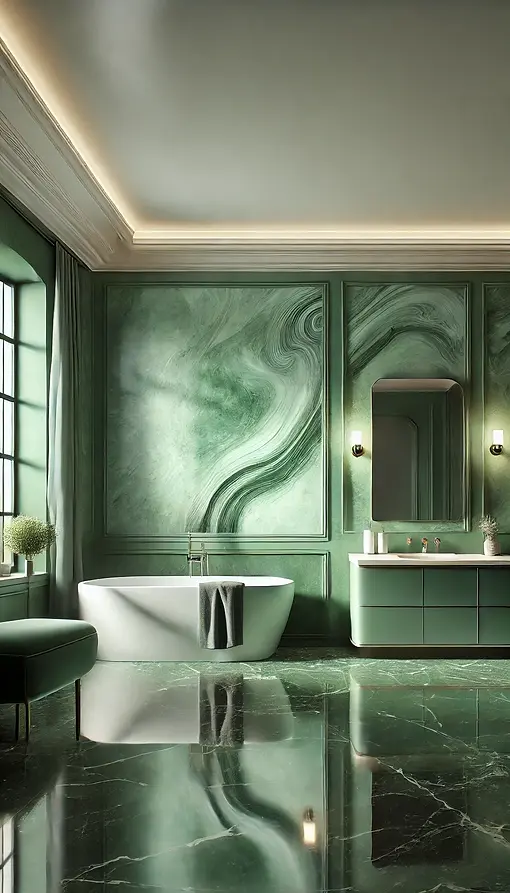

What is Venetian Walls?
Venetian plaster walls are a traditional, decorative finish that originated in ancient Rome and became widely used during the Renaissance in Venice. This plaster is made from a mix of lime, marble dust, and other natural materials, creating a smooth, polished surface with a luxurious, marble-like appearance. The application involves multiple thin layers of plaster, which are burnished to produce a high-gloss, reflective surface, though it can also be left matte for a more subtle finish. Venetian plaster is valued for its depth, texture, and ability to mimic the look of natural stone, making it a popular choice for elegant interiors.
Beyond its aesthetic appeal, Venetian plaster is highly durable and breathable, allowing moisture to evaporate, which prevents mold and mildew buildup. It’s also eco-friendly, thanks to its natural composition. This finish is versatile and can be applied to both walls and ceilings, providing a timeless, sophisticated look that complements a wide range of interior design styles, from classic to contemporary.



Classic Polished Finish
This style is the most traditional and features a high-gloss, marble-like surface. Achieved by burnishing the plaster after applying several layers, it creates a sleek, smooth look that reflects light and gives rooms an elegant, luxurious feel. This is ideal for sophisticated spaces such as formal living rooms, dining areas, and entryways.
Matte Finish
For a more understated and modern aesthetic, the matte finish softens the plaster’s texture, leaving a velvety, natural look. This style is often chosen for contemporary or minimalist interiors, where subtle elegance and a warm, tactile surface are preferred. It’s perfect for creating a calm, inviting atmosphere without overwhelming the space




Textured Finish
This style introduces more depth by allowing the plaster to have a rougher, more organic texture. The layers are applied with different techniques to create a tactile, almost sculptural effect. Textured Venetian plaster is popular in rustic, Mediterranean, or Tuscan-inspired designs, where the walls are meant to evoke the feeling of old-world craftsmanship
Marmorino
A variation of Venetian plaster, Marmorino creates a natural stone look with a more pronounced texture. It’s ideal for traditional, Mediterranean, or even industrial spaces. The finish can be matte, satin, or polished, and it often showcases a marble or limestone effect, perfect for achieving a historic or earth-toned aesthetic




Stucco Veneziano
This style is a highly polished version of Venetian plaster, emphasizing a glass-like, reflective finish. It’s often used in high-end, formal spaces and suits a more opulent, classic design, giving walls a striking sheen that mimics marble.
Metallic Venetian Plaster
For a more modern twist, metallic finishes are mixed into the plaster to give a subtle shimmer. This style works well in contemporary or glamorous settings, adding a dynamic element to the walls through reflective properties, especially in spaces where lighting plays a central role

